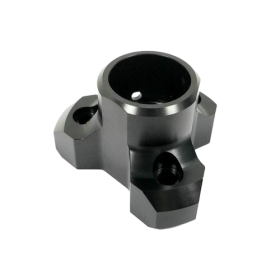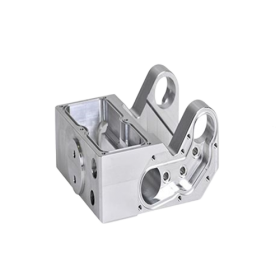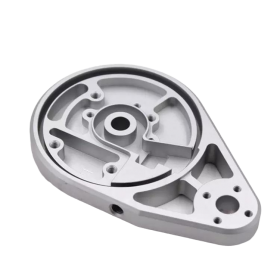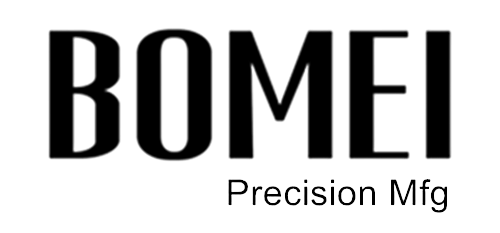New Products
-

Custom Turn-Mill Combination brass parts
-

Custom Turn-Mill Combination parts
-

Precision CNC Turning Parts Stainless Steel shaft accessories
-

Precision CNC Custom Made Colorful Anodized Aluminum milling parts
-

Custom CNC Milling Automated Machinery and Equipment Parts
-

OEM/ODM Custom High Precision Metal CNC Machining/Milling/Turning Service CNC Turning Part
A Comprehensive Guide CNC drilling
CNC drilling is a highly precise and efficient machining process that utilizes computer numerical control (CNC) technology to bore holes with exact specifications into various materials. This guide provides a comprehensive overview of CNC drilling, covering essential aspects like the definition, advantages, types of drilling operations, and key considerations for effective CNC drilling. With applications across industries ranging from aerospace to electronics, mastering CNC drilling is crucial for modern manufacturing.
What is CNC Drilling?
CNC drilling is a machining process that employs a rotating drill bit to create cylindrical holes in a fixed workpiece. Controlled by a computer program, the process ensures accuracy and repeatability by guiding the drill bit’s movement and rotation. CNC drilling is often combined with other CNC machining processes like milling and turning to produce complex parts that require a variety of features and finishes.
Types of CNC Drilling Operations
CNC drilling offers flexibility with several drilling techniques, each suited for specific purposes and material requirements. Here are the primary types of CNC drilling operations:
Tapping
Tapping is a crucial technique used to create threads inside the walls of a drilled hole. This process employs a tool known as a tap, which is usually a rotary tool held in a specialized floating tool holder. When the tap is inserted into the drilled hole, it rotates and cuts threads into the hole’s surface at a designated feed rate. The purpose of tapping is to ensure a secure connection between bolts and screws.
Spot Drilling
Spot drilling involves creating a shallow indentation on the workpiece to guide the drill bit for subsequent drilling operations. This helps prevent drill bit wander—the tendency of a drill bit to move slightly off-course when it first contacts the workpiece.
Drilling
Drilling is the core operation of creating cylindrical holes with varying depths and diameters. It is a straightforward process but requires precise control over spindle speed and feed rate to ensure hole accuracy and surface quality.
Micro-Drilling
Micro-drilling creates small-diameter holes, often in high-precision applications like electronics and medical devices. Due to the fragility of micro-drill bits, this process requires specialized equipment, precise programming, and careful handling to avoid bit breakage.
Boring
Boring is a subtractive manufacturing technique that enlarges a pre-drilled or cast hole while enhancing its dimensional accuracy. This process employs a single-point cutting tool to remove material from the inside of a workpiece.
Boring is the preferred method for machining holes that require various precision grades, diameters, and positional constraints. It is particularly advantageous compared to drilling for creating larger holes due to its superior accuracy.
Counterboring
Counterboring process creates a stepped hole, where the larger diameter is at the surface, allowing the head of a bolt or screw to sit flush with or below the workpiece’s surface. This operation is essential in many assembly processes, as it ensures that fasteners do not protrude undesirably from the surface of the workpiece. This is particularly important in applications where aerodynamics or aesthetics are a concern.
Countersinking
Countersinking, like counterboring, is a technique used to create a conical hole that allows screw heads to sit flush with the surface of the workpiece. This method is commonly employed in applications that require a smooth and flat surface, particularly in assembling mechanical components. Countersinking improves a part’s functional and aesthetic qualities, ensuring a seamless integration of fasteners.
Reaming
Reaming is a cutting operation used to enlarge existing hole diameters with greater accuracy and to improve the surface finish of the hole’s walls. The tool employed in this process is called a “reamer.” Reaming is considered a finishing operation, as it removes significantly less material than boring or drilling. Additionally, the reamer rotates at precisely half the RPM of the drilling operation when machining the workpiece.
Center Drilling
Center drilling is a preparatory step for subsequent drilling or machining operations. It involves creating a conical hole that helps guide the drill bit during deeper drilling, ensuring proper alignment and accuracy. This process is especially important for long or complex drilling tasks, where the risk of the drill bit wandering could compromise the integrity of the workpiece. Center drilling is a fundamental step in achieving the high precision levels required in aerospace and machinery manufacturing industries.
Vibratory Drilling
Vibratory drilling utilizes oscillating motion to reduce friction and heat buildup, making it suitable for drilling hard materials such as titanium and high-strength alloys. This technique helps prevent work hardening and extends the life of drill bits by reducing thermal stress.
Advantages of CNC Drilling
1. Precision in Drilling: It’s the best tool for creating precise holes, especially cylindrical holes, using either a twist drill or a standard drill bit.
2. Increased Efficiency and Greater Reproducibility: Compared to traditional manual methods, CNC drilling works faster, shortening production cycles significantly. What’s more, once programmed, it produces identical holes across batches, guaranteeing consistency—essential for mass production of parts like automotive components or electronics PCBs, where interchangeability is key.
3. Handle Complex Drilling Jobs: The adaptability of CNC machines lets them tackle tasks that manual drilling can barely, or even never, achieve—such as drilling holes of varying sizes and depths in one setup, or creating angled or intricate hole patterns. This flexibility meets the needs of complex part manufacturing in sectors like industrial machinery.
4. Ideal for mass production: Despite its advanced capabilities, CNC drilling is straightforward to operate; machines like upright CNC drill presses excel at continuous, repetitive drilling. Whether using twist drills or standard drill bits to make precise cylindrical holes, it streamlines high-volume production, balancing speed and simplicity.
Challenges in CNC Drilling
Despite its benefits, CNC drilling presents specific challenges:
- Tool Wear: Drill bits wear over time, especially with hard materials, necessitating regular monitoring and replacement.
- Heat Generation: Excessive heat can degrade both the tool and the material, requiring effective cooling systems to maintain part quality.
- Material-Specific Issues: Each material has unique machining requirements, with composites needing special attention to avoid delamination, and metals requiring adequate cooling and lubrication.
- Programming Complexity: Creating precise tool paths and setting accurate machine parameters requires expertise in CNC programming.
By understanding these challenges and applying best practices, manufacturers can mitigate risks and achieve optimal CNC drilling results.
Conclude
CNC drilling is extensively utilized in manufacturing sectors where speed and efficiency in drilling holes are of primary importance, e.g., electronics, woodworking, and metal fabrication. The CNC drilling machine is very efficient at making precise holes in printed circuit boards, sheet metal, and small parts, thus proving to be a first-choice machine for repetitive, high-volume drilling operations.

 Evan Xiao
Evan Xiao